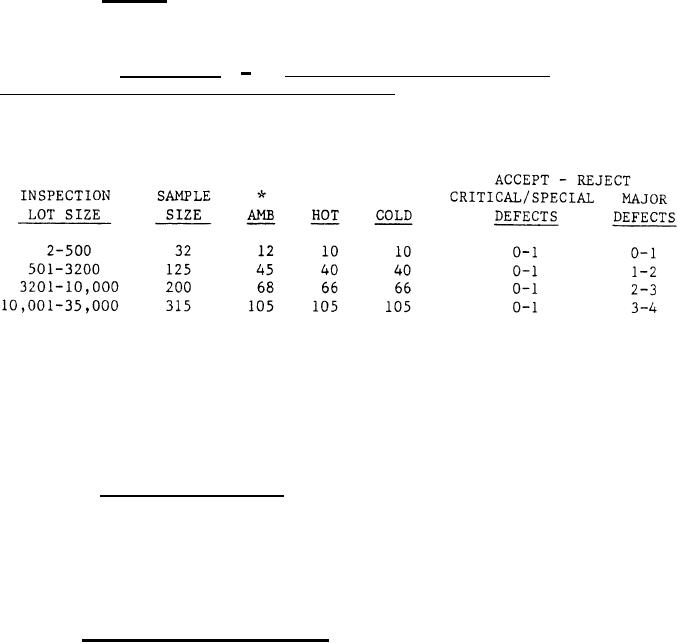 |
|||
|
|
|||
| ||||||||||
|
|  MIL-E-63300A(AR)
4.4.3 Testing. Testing is described in the First Article and
Quality Conformance Inspection "Classification of Defects and Test"
forms and as specified in 4.5.
4.4.3.1 Ambient (25C + 5C), Hot (63C + 3C) and Cold
(-37C - 3C) temperature functioning tests. The table below
shall be used for the selection of the lot acceptance sample sizes
for ambient, hot and cold temperature testing of lots of electronic
assemblies.
The units shall be tested for all the functional parameters
(under critical, special, major) listed in 4.4.2.5. Reject number
is the number of defective units that would reject the lot. since
all the units have to be 100% inspected at ambient for critical and
special defects the quantities listed under * do not have to be
reinspected for critical and special defects at ambient temperature
(see 4.5.16) but must be inspected for major defects.
4.4.4 Inspection equipment. The inspection equipment required
to perform the examinations and tests prescribed herein is described
in the `Paragraph Reference/Inspection Method' column in
Classification of Defects and Tests forms beginning with paragraph
4.4.2.1. The contractor shall submit for approval inspection
equipment designs in accordance with the terms of the contract. See
Section 6 of MIL-A-48078, and section 6.3 herein.
4.5 Test methods and procedures . Only government approved test
equipment and test fixtures shall be connected to electronic
assemblies under test to verify that it complies with the
requirements specified herein. Increasing the PTB oscillator
frequency to reduce test time is acceptable provided, the higher
frequency oscillator signal maintains an approximate 50% duty cycle
and has a peak amplitude frequency oscillator signal which does not
cause or mask malfunctions in the functional operation of the
electronic assembly; the higher frequency oscillator signal is well
within the capability of the test equipment to monitor PA, TL, SD
(normal or extended) with an accuracy of 3 PTB counts; the actual
34
|
|
Privacy Statement - Press Release - Copyright Information. - Contact Us |